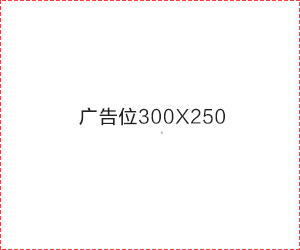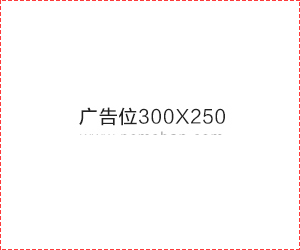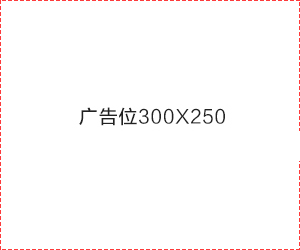Takeda Announces Approval
Takeda Announces Approval of LIVTENCITY® (maribavir) in Japan for Post-Transplant Cytomegalovirus (CMV) Infection/Disease That Is Refractory to Existing Anti-CMV Therapies
LIVTENCITY Is the First and Only Post-Transplant Anti-CMV Treatment Approved in Japan That Targets/Inhibits UL97 Protein Kinase1
CMV Is One of the Most Common and Serious Post-transplant Infections and Can Lead to Secondary Infections and Serious Consequences, Including Loss of Transplanted Organ and Failure of Graft2,3
OSAKA, Japan & CAMBRIDGE, Mass. -- (BUSINESS WIRE) --
Takeda (TSE:4502/NYSE:TAK) today announced that LIVTENCITY® (maribavir) has been approved by the Japanese Ministry of Health, Labour and Welfare (MHLW) for post-transplant cytomegalovirus (CMV) infection/disease that is refractory to existing anti-CMV therapies.4 LIVTENCITY is the first and only post-transplant anti-CMV treatment approved in Japan that targets and inhibits pUL97 kinase and its natural substrates.1
“We are pleased by the approval of LIVTENCITY in Japan, which will provide the transplant community with a new option for treatment of post-transplant CMV infection in patients refractory to other therapies,” said Yasushi Kajii, Head, R&D Japan Region at Takeda. “A diagnosis of CMV infection can be particularly challenging for patients, and serious complications such as increased organ rejection and hospitalization rates can occur, when not successfully treated. We believe LIVTENCITY has the potential to help address the challenges faced by people with post-transplant CMV and transform the treatment landscape for patients in Japan.”
The approval is primarily based on the results of the Phase 3 SOLSTICE trial (NCT02931539), which evaluated the safety and efficacy of LIVTENCITY versus alternative antiviral treatments for patients with CMV infection/disease refractory* to prior therapies who underwent hematopoietic stem cell transplant (HSCT) or solid organ transplant (SOT), and the Japanese Phase 3 open-label study in patients with CMV infection, including those with refractory* CMV infection who underwent HSCT or SOT (NCT05137717).
In the SOLSTICE trial (maribavir n=235, alternative treatments n=117), maribavir showed statistically significant improvement when compared to alternative antiviral treatments at the end of Week 8 for the primary endpoint of confirmed CMV viremia clearancea in post-transplant (HSCT or SOT) adults with refractory* CMV infection.5 Of the 234 patients included in the safety evaluation, adverse reactions (related cases) were observed in 141 patients (60.3%).5
An open-label, multicenter, single-arm study was conducted to evaluate the efficacy and safety in Japanese patients in post-transplant (HSCT or SOT) adultsc (41 randomized, including 3 subjects with CMV infection refractory* to the most recently administered anti-CMV agent). The primary endpoint of CMV viremia clearanceb at the end of Study Week 8 was achieved in 33.3% of patients with refractory* CMV infection.4 Of 41 subjects included in the safety evaluation, adverse reactions (related events) were observed in 36.6% (15 subjects). 4
About LIVTENCITY
LIVTENCITY (maribavir), an orally administered (tablet) anti-CMV compound, is the first and only antiviral agent that targets and inhibits the CMV-specific UL97 protein kinase and thus its natural substrates.1 As of June 2024, LIVTENCITY is approved in more than 30 countries for post-transplant CMV refractory* to prior therapies, including such major markets as Japan, the United States, Canada, Australia, the European Union and China.
LIVTENCITY Product Overview in Japan
Product Name | LIVTENCITY 200 mg tablets. |
Generic Name | Maribavir |
Indications | The post-transplant cytomegalovirus (CMV) infection/disease that is refractory to existing anti-CMV therapies. |
Precautions concerning indications |
|
Dosage and Administration | Usually, the recommended dosage for adultsc is 400 mg of maribavir to be administered orally twice daily. |
About Takeda’s SOLSTICE Trial
The TAK-620-303 (SOLSTICE) trial (NCT02931539, EudraCT 2015-004725-13) was a Phase 3 global, multicenter, randomized, open-label, active-controlled trial to assess the efficacy and safety of maribavir treatment compared to investigator-assigned treatment (alternative antiviral therapies) in 352 HSCT and SOT recipients with CMV infections that were refractory* or resistant to one or a combination of the alternative antiviral therapies: ganciclovir, valganciclovir, foscarnet, or cidofovir. Adult patients underwent a 2-week screening period, followed by randomization 2:1 to maribavir (n=235) (400 mg, twice daily) or alternative antiviral treatments (n=117) (as dosed by the investigator) for up to 8 weeks. After completion of the treatment period, subjects entered a 12-week follow-up phase.5 The trial’s primary efficacy endpoint was confirmed CMV viremia clearance a at the end of Week 8. The key secondary endpoint was confirmed CMV viremia clearance and CMV infection symptom control† at the end of Study Week 8 with maintenance of this treatment effect through Study Week 16.5
About Cytomegalovirus (CMV)
CMV is a beta herpesvirus that commonly infects humans; serologic evidence of prior infection can be found in 40-100% of various adult populations.6 CMV typically resides latent and asymptomatic in the body but may reactivate during periods of immunosuppression. Serious disease may occur in individuals with compromised immune systems, which includes patients who receive immunosuppressants associated with various types of transplants including HSCT or SOT.5,7 Out of the estimated 200,000 adult transplants per year globally, CMV is one of the most common viral infections experienced by transplant recipients, with an estimated incidence rate between 16-56% in SOT recipients and 30-80% in HSCT recipients.7,8
In transplant recipients, reactivation of CMV infection can lead to secondary infections and serious consequences, including graft loss and, in extreme cases, can be fatal.2,3,5
About Takeda
Takeda is focused on creating better health for people and a brighter future for the world. We aim to discover and deliver life-transforming treatments in our core therapeutic and business areas, including gastrointestinal and inflammation, rare diseases, plasma-derived therapies, oncology, neuroscience and vaccines. Together with our partners, we aim to improve the patient experience and advance a new frontier of treatment options through our dynamic and diverse pipeline. As a leading values-based, R&D-driven biopharmaceutical company headquartered in Japan, we are guided by our commitment to patients, our people and the planet. Our employees in approximately 80 countries and regions are driven by our purpose and are grounded in the values that have defined us for more than two centuries. For more information, visit www.takeda.com.
LIVTENCITY Safety Information
Contraindications
Contraindications include Hypersensitivity to the active substance or to any of the excipients and co‑administration with ganciclovir or valganciclovir.
Special warnings and precautions for use
Some maribavir pUL97 resistance-associated substitutions confer cross-resistance to ganciclovir and valganciclovir. CMV DNA levels should be monitored, and resistance mutations should be investigated in patients who do not respond to treatment. Treatment should be discontinued if maribavir resistance mutations are detected.
LIVTENCITY is not expected to be effective in treating CMV CNS infections (e.g. meningo‑encephalitis).
LIVTENCITY has the potential to increase the concentrations of immunosuppressants that are cytochrome P450 (CYP)3A/P-gp substrates with narrow therapeutic margins (including tacrolimus, cyclosporine, sirolimus and everolimus). The plasma levels of these immunosuppressants must be frequently monitored throughout treatment with LIVTENCITY, especially following initiation and after discontinuation of LIVTENCITY, and doses should be adjusted, as needed.
The concomitant use of LIVTENCITY and certain medicinal products may result in known or potentially significant medicinal product interactions, some of which may lead to:
possible clinically significant adverse reactions from greater exposure of concomitant medicinal products.
reduced therapeutic effect of LIVTENCITY.
Sodium content: This medicinal product contains less than 1 mmol sodium (23 mg) per tablet, that is to say essentially ‘sodium‑free’.
Pregnancy & Breast-feeding: LIVTENCITY is not recommended during pregnancy and in women of childbearing potential not using contraception. Breast‑feeding should be discontinued during treatment with LIVTENCITY.
Interactions
Effect of other medicinal products on maribavir: Co-administration of maribavir with strong cytochrome P450 3A (CYP3A) inducers rifampicin, rifabutin or St. John’s wort is not recommended. If co-administration of maribavir with other strong or moderate CYP3A inducers (e.g., carbamazepine, efavirenz, phenobarbital and phenytoin) cannot be avoided, the maribavir dose should be increased to 1 200 mg twice daily. No dose adjustment is needed when maribavir is co‑administered with CYP3A inhibitors.
Effect of maribavir on other medicinal products: If dose adjustments of concomitant medicinal products are made due to treatment with maribavir, doses should be readjusted after treatment with maribavir is completed.
Co-administration of maribavir with valganciclovir and ganciclovir is contraindicated.
Concomitant administration of maribavir and medicinal products that are sensitive substrates of CYP1A2 with a narrow therapeutic window (e.g., tizanidine and theophylline) should be avoided due to the risk for lack of efficacy of CYP1A2 substrates.
When the immunosuppressants tacrolimus, cyclosporine, everolimus or sirolimus are co-administered with maribavir, immunosuppressant levels should be frequently monitored throughout treatment with maribavir, especially following initiation and after discontinuation of maribavir and dose adjusted, when needed.
Caution should be exercised when maribavir and sensitive P-gp substrates (e.g., digoxin, dabigatran) are co‑administered. Serum digoxin concentrations should be monitored, and dose of digoxin may need to be reduced, as needed (see Table 1).
Co‑administration of maribavir with sensitive BCRP substrates such as rosuvastatin, is expected to increase their exposure and lead to undesirable effects.
Adverse Reactions
Very common (≥1/10) | Taste disturbance, Diarrhoea, Nausea, Vomiting, Fatigue |
Common (≥1/100 to <1/10) | Headache, Abdominal pain upper, Decreased appetite, Immunosuppressant drug level increased, Weight decreased |
The most commonly reported serious adverse reactions were diarrhoea (2%) and nausea, weight decreased, fatigue, immunosuppressant drug level increased, and vomiting (all occurring at < 1%).
Please consult the LIVTENCITY (maribavir) approved label before prescribing, particularly in relation to dosing and treatment monitoring.
For Japan, please consult the LIVTENCITY Japan Package Insert.
For the European Union, please consult the Summary of Products Characteristics (SmPC).
For China, please consult the LIVTENCITY China Package Leaflet.
For full U.S. Prescribing Information, including the approved indication and important safety information, please visit: https://content.takeda.com/?contenttype=pi&product=liv&language=eng&country=usa&documentnumber=1
Important Notice
For the purposes of this notice, “press release” means this document, any oral presentation, any question and answer session and any written or oral material discussed or distributed by Takeda Pharmaceutical Company Limited (“Takeda”) regarding this release. This press release (including any oral briefing and any question-and-answer in connection with it) is not intended to, and does not constitute, represent or form part of any offer, invitation or solicitation of any offer to purchase, otherwise acquire, subscribe for, exchange, sell or otherwise dispose of, any securities or the solicitation of any vote or approval in any jurisdiction. No shares or other securities are being offered to the public by means of this press release. No offering of securities shall be made in the United States except pursuant to registration under the U.S. Securities Act of 1933, as amended, or an exemption therefrom. This press release is being given (together with any further information which may be provided to the recipient) on the condition that it is for use by the recipient for information purposes only (and not for the evaluation of any investment, acquisition, disposal or any other transaction). Any failure to comply with these restrictions may constitute a violation of applicable securities laws. The companies in which Takeda directly and indirectly owns investments are separate entities. In this press release, “Takeda” is sometimes used for convenience where references are made to Takeda and its subsidiaries in general. Likewise, the words “we”, “us” and “our” are also used to refer to subsidiaries in general or to those who work for them. These expressions are also used where no useful purpose is served by identifying the particular company or companies.
Forward-Looking Statements
This press release and any materials distributed in connection with this press release may contain forward-looking statements, beliefs or opinions regarding Takeda’s future business, future position and results of operations, including estimates, forecasts, targets and plans for Takeda. Without limitation, forward-looking statements often include words such as “targets”, “plans”, “believes”, “hopes”, “continues”, “expects”, “aims”, “intends”, “ensures”, “will”, “may”, “should”, “would”, “could”, “anticipates”, “estimates”, “projects” or similar expressions or the negative thereof. These forward-looking statements are based on assumptions about many important factors, including the following, which could cause actual results to differ materially from those expressed or implied by the forward-looking statements: the economic circumstances surrounding Takeda’s global business, including general economic conditions in Japan and the United States; competitive pressures and developments; changes to applicable laws and regulations, including global health care reforms; challenges inherent in new product development, including uncertainty of clinical success and decisions of regulatory authorities and the timing thereof; uncertainty of commercial success for new and existing products; manufacturing difficulties or delays; fluctuations in interest and currency exchange rates; claims or concerns regarding the safety or efficacy of marketed products or product candidates; the impact of health crises, like the novel coronavirus pandemic, on Takeda and its customers and suppliers, including foreign governments in countries in which Takeda operates, or on other facets of its business; the timing and impact of post-merger integration efforts with acquired companies; the ability to divest assets that are not core to Takeda’s operations and the timing of any such divestment(s); and other factors identified in Takeda’s most recent Annual Report on Form 20-F and Takeda’s other reports filed with the U.S. Securities and Exchange Commission, available on Takeda’s website at: https://www.takeda.com/investors/sec-filings-and-security-reports/ or at www.sec.gov. Takeda does not undertake to update any of the forward-looking statements contained in this press release or any other forward-looking statements it may make, except as required by law or stock exchange rule. Past performance is not an indicator of future results and the results or statements of Takeda in this press release may not be indicative of, and are not an estimate, forecast, guarantee or projection of Takeda’s future results.
Medical Information
This press release contains information about products that may not be available in all countries, or may be available under different trademarks, for different indications, in different dosages, or in different strengths. Nothing contained herein should be considered a solicitation, promotion or advertisement for any prescription drugs including the ones under development.
* Including a subgroup with genotypic resistance to alternative antiviral treatments.
a Defined as confirmed CMV DNA concentration below the lower limit of quantification (<LLOQ; i.e., <137 IU/mL) in two consecutive samples separated by at least five days.
b Defined as confirmed CMV DNA concentration below the lower limit of quantification (<LLOQ; i.e., <34.5 IU/mL) in two consecutive samples separated by at least five days.
c Defined as > 15 years old
† CMV infection symptom control was defined as resolution or improvement of tissue-invasive disease or CMV syndrome for symptomatic patients at baseline, or no new symptoms for patients who were asymptomatic at baseline.
References
Avram S, et al. Novel drug targets in 2021. Nature Reviews Drug Discovery. 2022;21(5):328-328.
Ramanan P, Razonable RR. Cytomegalovirus infections in solid organ transplantation: a review. Infection & Chemotherapy. 2013;45(3):260
Camargo JF, Komanduri KV. Emerging concepts in cytomegalovirus infection following hematopoietic stem cell transplantation. Hematol Oncol Stem Cell Ther. 2017;10(4):233-238. doi:10.1016/j.hemonc.2017.05.001
LIVTENCITY Package Insert in Japan.
Avery R, Alain S, Alexander BD, et al. SOLSTICE Trial Investigators. Maribavir for refractory cytomegalovirus infections with or without resistance post-transplant: results from a phase 3 randomized clinical trial. Clin Infect Dis. 2022;75(4):690–701. doi:10.1093/cid/ciab988
de la Hoz RE, Stephanie G, Sherlock C. Diagnosis and treatment approaches to CMV infections in adult patients. J Clin Virol. 2002;25(Suppl 1):S1-S12. doi:10.1016/s1386-6532(02)00091-4
Azevedo LS, Pierrotti LC, Abdala E, et al. Cytomegalovirus infection in transplant recipients. Clinics (Sao Paolo). 2015;70(7):515-523. doi:10.6061/clinics/2015(07)09
Styczynski J. Who is the patient at risk of CMV recurrence: a review of the current scientific evidence with a focus on hematopoietic cell transplantation. Infect Dis Ther. 2018;(7):1-16. doi:10.1007/s40121-017-0180-z
-
一只船教育最新消息让人兴奋,退费工作
02-27 来源:阿里教育网
-
BOP 天堂鸟与大家逆境中冒险
04-02 来源:文旅新闻网
-
新沐教育最新消息:响应最新政策号召,
02-27 来源:网络
-
践行新型智库建设精神 创建中国创新策划
02-02 来源:中华企业在线
-
言成教育最新消息,平台为了保证退费工
02-27 来源:阿里教育网
-
学慧网最新消息:想办理退费,请一定要
02-27 来源:阿里教育网
-
学霸君最新消息 2023年平台计划完成所有
02-27 来源:阿里教育网
-
逸成教育最新消息:现在学费退费了,学
02-28 来源:阿里教育网
-
兴为教育发布了退费的最新消息,学员们
02-27 来源:阿里教育网
-
学璐教育新一轮退费公告来了,退费工作
02-27 来源:阿里教育网





























